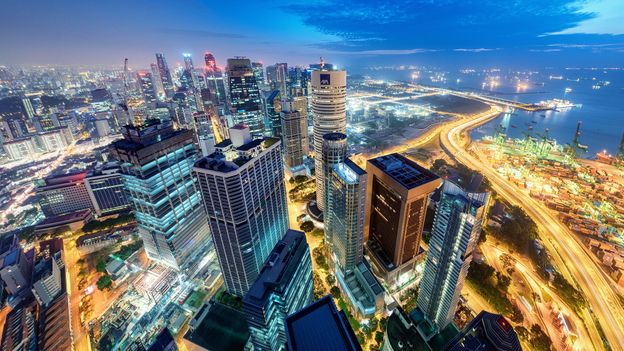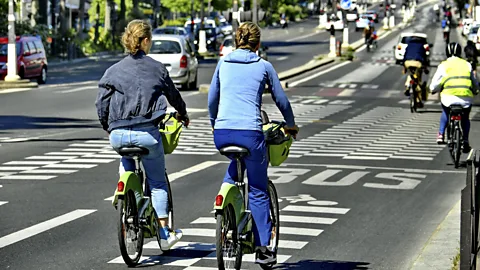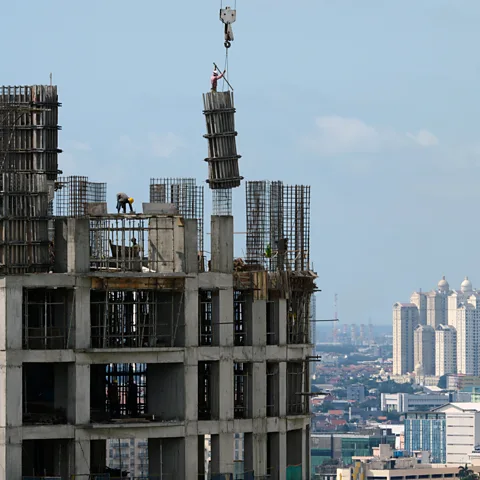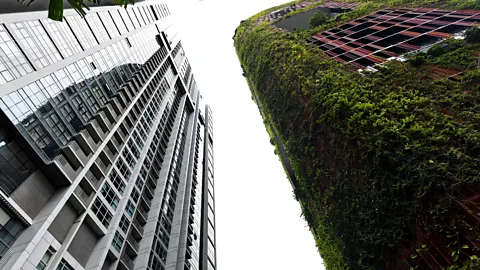
How cities are going carbon neutral
[ad_1]
 Karim Ait Adjedjou/Avenir Pictures/Alamy
Karim Ait Adjedjou/Avenir Pictures/AlamyHome to the majority of the global human population, urban areas make an outsized contribution to carbon emissions. What can they do to reach net zero by the middle of the century?
But in response, 25 mega-cities have now pledged to become carbon neutral by 2050. These include Rio de Janeiro, New York, Paris, Oslo, Mexico City, Melbourne, London, Milan, Cape Town, Buenos Aires, Caracas, Copenhagen, and Vancouver. If the world hopes to meet its ambition of limiting global temperature increases to 1.5C by reaching net zero carbon emissions by the middle of the century, other cities will almost certainly have to do the same. So, what will our crowded, bustling metropolises have to do to become carbon neutral?
One of the biggest challenges facing cities are their carbon emissions from transport. Some cities are already trying to reduce these, along with other types of pollution from vehicles, by introducing ultra-Low Emission Zones (ULEZ).
2045: Memories of the Future
This article is part of 2045: Memories of the Future, a multimedia series by BBC Future and BBC World News that examines how much the world will have to change by the year 2045 if it is to reach net zero by the middle of the Century and so keep climate change to within the 1.5C target set by the Paris Agreement on Climate Change.
To help reduce the emissions that come from heating, cooling and powering buildings, however, the construction industry has been making to efforts to incorporate more alternative energy sources into their design. The aim is to make buildings less reliant on fossil fuels.
In Ulm, southern Germany, the Energon building uses a process called passive heating, drawing on natural energy sources to regulate the building’s temperature.
Underground canals around the building suck in and heat incoming air in winter, and cool the system in summer with the help of probes extending 100m (330ft) underground, where the earth’s natural temperature can be used to cool or heat the air above.
 Romeo Gacad/Getty Images
Romeo Gacad/Getty ImagesCities are also adopting nature-based solutions outside to help store carbon. Medellin in Colombia has planted 30 green corridors along 18 roads and 12 waterways, with 8,300 trees and 350,000 bushes. This has reduced the local temperature by more than 2C.
Medellin and other dense cities in hot climates can suffer from the urban head island effect, where hard materials absorb solar energy and pass it back into cities, says Benz Kotzen, associate professor at the University of Greenwich’s School of Design.
One way of tackling this introducing nature-based solutions, such as green roofs and living walls.
“Green infrastructure solves a lot of problems. It increases biodiversity, has a cooling effect from the evaporation of vegetation, and it can absorb some particulate pollution in the air,” says Kotzen.
Green infrastructure has been crucial in Singapore to lower the reliance on air conditioning, says Cheong Koon Hean, an architect and expert in urban planning at the Centre for Innovative Cities at Singapore University of Technology and Design. Until recently she was also the chair of Singpore’s Housing Development Board, helping to shape the city’s public housing.
Buildings in the city are being designed to maximise natural ventilation, says Koon Hean.
“Singapore is a very dense city, in a hot and humid climate,” she says. “And with population growth, we have a lot of high-rise buildings. And we’re facing increasingly warmer temperatures.”
At the Oasia hotel in Singapore, for example, a wall of greenery adorning the exterior helps to cool the building. The temperature of the façade measures 28C (82F), compared to the surface temperature of a building cladded with metal, which would be around 42C (107F).
But cities are only able to make use of their individual resources and climates. Many cities are using this to their advantage – for example, Copenhagen aims to build 360 wind turbines by 2025 to supply most of the electricity demand in the city, while Rio de Janeiro’s Museum of Tomorrow uses nearby water from Guanabara Bay to lower the indoor temperature.
But the changes required to reach net zero carbon require city authorities to balance countless systems and interests – and many operate beyond their control.
 Roslan Rahman/Getty Images
Roslan Rahman/Getty ImagesThe relationship between the private and public sector on a city level needs to improve, says Stefan Knupfer, who leads sustainable practice for McKinsey.
“Historically, the private and public sectors on the city level haven’t worked together because cities need to be seen as being neutral,” he says. “But we need expertise in new technologies from the private sector so cities can learn best practice. It’s almost impossible for cities to understand the possibilities of autonomous driving of electric vehicles, for example, and they’ll need expertise from the private sector.
“Cities like New York and Paris have very clear plans of how to go about sustainability. If you don’t have a plan, you won’t find private investors to invest in cities because investment needs predictability.”
Knupfer says it is important that cities focus on just a few areas needing improvement.
In 2017, he helped to analyse around 450 tools that were being used to make cities more sustainable, and defined 12 initiatives that cities should focus on to make the biggest difference. These include decarbonising the electricity grid, optimising energy efficiency in buildings, offering residents low-carbon transport options and improving how we manage waste.
Cities, he says, need to focus on initiatives with the shortest-term impact because time is running out to mitigate the worst effects of global warming.
“It’s important to work on what we know, not dreaming things up.”
[ad_2]
Source link





